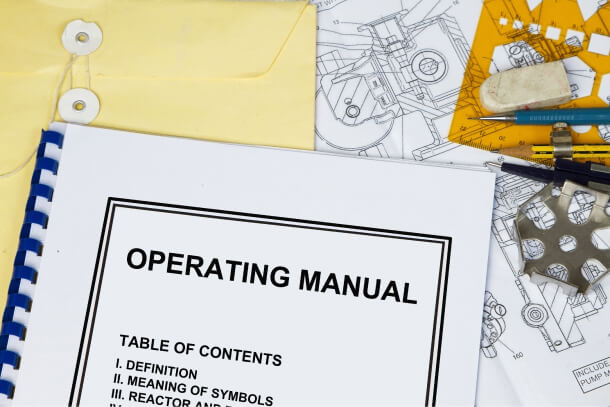
Refined Technical English (STE) has surfaced as an essential software in the complex writing business, made to improve the understanding and readability of complex documentation. Formerly created for the aerospace industry, STE has because been followed across various groups, supporting companies communicate complicated complex data more effectively. This information considers the beginnings, concepts, and applications of Basic Specialized British, displaying their effect on worldwide specialized communication.
Refined Technical English, also known as ASD-STE100, was created in the 1980s by the Aerospace and Defence Industries Association of Europe (ASD). Its major goal was to standardize complex documentation throughout the aerospace market to reduce the chance of misinterpretation by non-native Simplified Technical English speakers and make sure that technical instructions were apparent and simple to follow. Provided the difficulty and large limits associated with aerospace operations, the need for a standardized and simple form of British became apparent.
The first version of STE was predicated on active refined language guidelines found in numerous industries, but it was specifically designed to generally meet the needs of the aerospace sector. Over the years, STE has been adjusted and widened, with the present variation, ASD-STE100, being well known and utilized in different industries beyond aerospace, including defense, manufacturing, and computer software development.
Simple Technical English is governed by some primary rules and directions that help writers make clear, brief, and unambiguous specialized documentation. These principles are created to produce the text easier to learn and realize, specially for non-native English speakers.
Managed Vocabulary: STE restricts the vocabulary to some permitted words, each with a particular meaning. That controlled terminology assists eliminate ambiguity and guarantees reliability across specialized documents. Authors are prompted to use just these accepted words and in order to avoid synonyms, which could confuse readers.
Easy Sentence Design: STE encourages the usage of simple, simple sentence structures. Phrases should really be apparent and strong, avoiding complicated or compound sentences that will confuse the reader. The use of effective style is encouraged, as it makes recommendations more direct and simpler to follow.
Reliability: Consistency is a key concept in STE. Authors are advised to use the same terminology and structure on top of a document. This can help visitors construct familiarity with the terms and phrases used, lowering the likelihood of misinterpretation.
Specialized Precision: While STE simplifies language, it generally does not bargain on complex accuracy. The target would be to convey complex specialized information in ways that’s easily understood without dropping the essential complex details. Writers are inspired to supply specific and appropriate descriptions using the permitted vocabulary.
Avoidance of Idiomatic Words: Idioms and colloquialisms are prevented in STE since they may not change well across cultures or languages. As an alternative, authors are encouraged to use clear and literal language that may be simply understood by all readers.
While STE was basically created for the aerospace market, their programs have expanded to some other sectors. Today, STE is used in industries such as for instance protection, production, fat and gas, and application development. The principles of STE are especially valuable in industries wherever complex precision and understanding are critical.
Aerospace and Security: In aerospace and security, where safety is paramount, STE helps ensure that technical instructions, maintenance directions, and detailed techniques are clear and unambiguous. This reduces the danger of misinterpretation and improves safety.
Manufacturing: In the manufacturing industry, STE is employed to produce obvious and consistent technical certification, including consumer manuals, assembly directions, and preservation guides. This helps assure that most personnel, regardless of the native language, can understand and follow directions accurately.
Pc software Development: In the application market, STE is employed to produce user-friendly documentation for complicated pc software products. By simplifying complex language, STE makes it simpler for people to know pc software functionalities and troubleshoot issues.
Globalization and Localization: As companies increasingly operate on an international degree, the need for obvious and consistent complex documentation has grown. STE facilitates the globalization and localization of complex documents by lowering the complexity of language, rendering it better to translate and modify material for different markets.
The usage of Refined Complex English offers a few significant advantages to organizations and readers alike: Increased Quality and Readability: By simplifying language and using a managed terminology, STE makes complex papers easier to read and understand. This decreases the likelihood of misinterpretation and errors.
Decreased Translation Prices: Basic language is simpler and faster to change, primary to lessen translation costs. Additionally, the consistency and understanding of STE minimize the requirement for considerable revisions through the translation process.
Improved Safety and Submission: In industries where protection and compliance are important, STE assures that recommendations and techniques are obviously recognized by all personnel, reducing the chance of incidents and ensuring conformity with market regulations. Increased Efficiency: Obvious and concise documentation helps employees to comprehend and follow recommendations quicker, leading to improved effectiveness and productivity.
Refined Technical English represents an essential role in increasing world wide complex conversation by providing a standardized way of publishing apparent and concise technical documentation. Its rules of controlled vocabulary, simple sentence structure, reliability, and specialized accuracy make it an invaluable instrument for industries wherever clarity and precision are essential. As globalization remains to operate a vehicle the necessity for powerful cross-cultural transmission, the importance of STE in specialized publishing is likely to develop, ensuring that complex complex data is accessible and clear to audiences worldwide.
Simplified Complex British (STE) is just a controlled language used in technical publishing to ensure understanding, uniformity, and readability. Initially developed for the aerospace market, STE is now an essential tool for specialized authors across various industries. That quick article traces the main element principles of STE and its significance in complex documentation.
